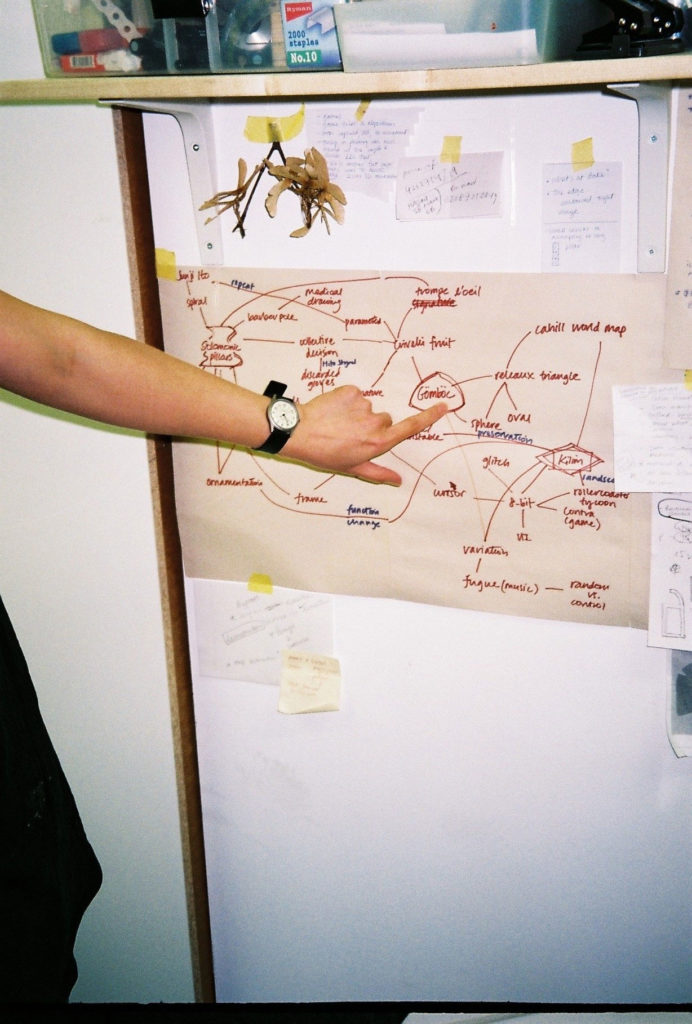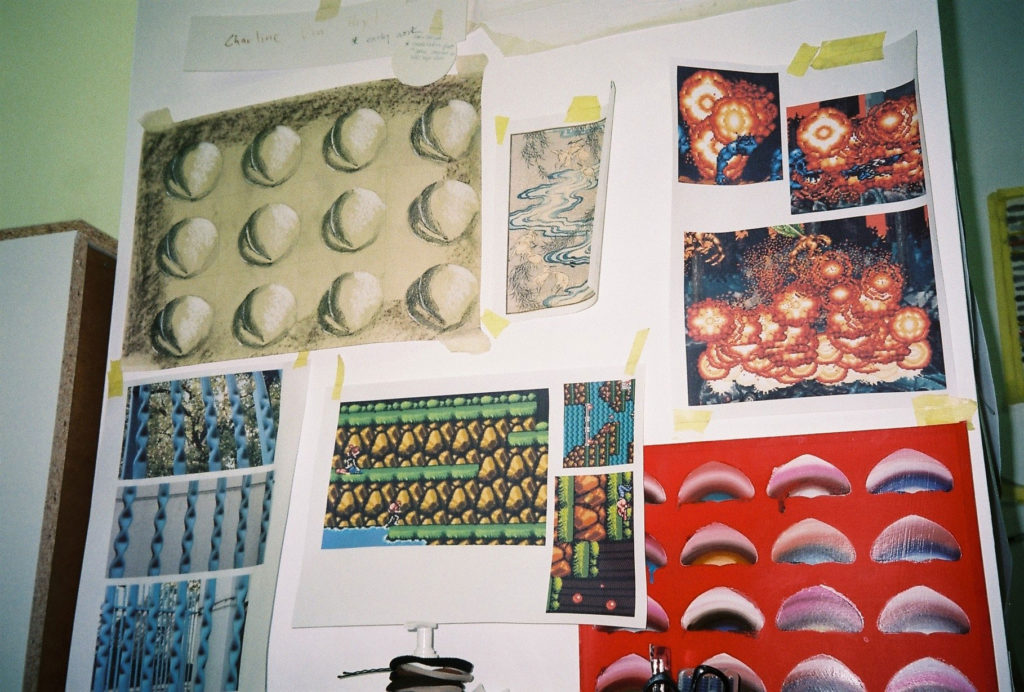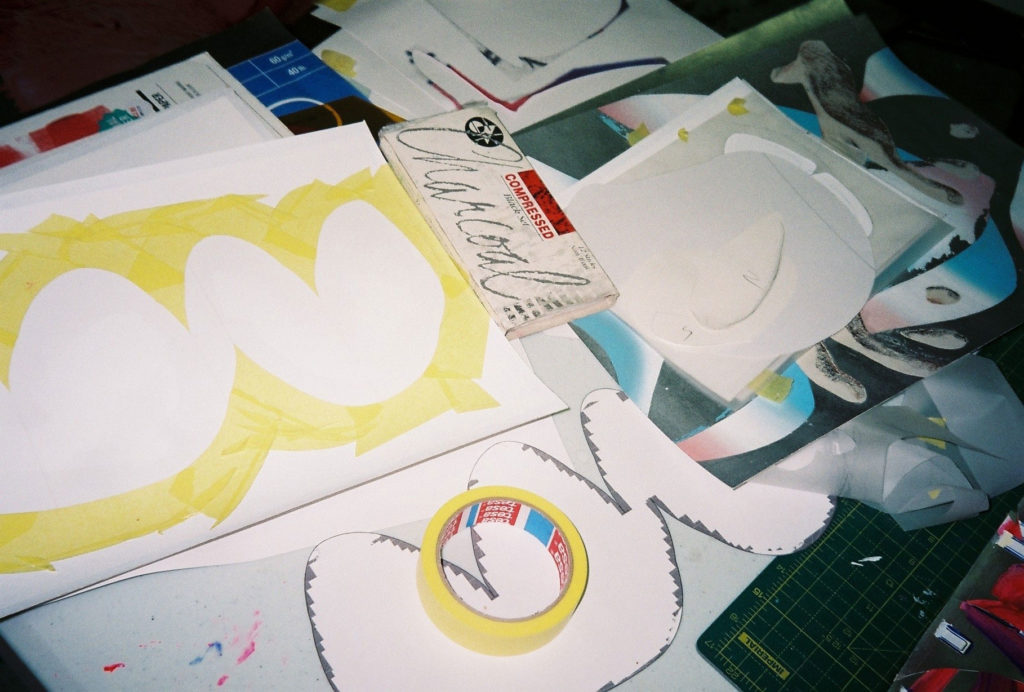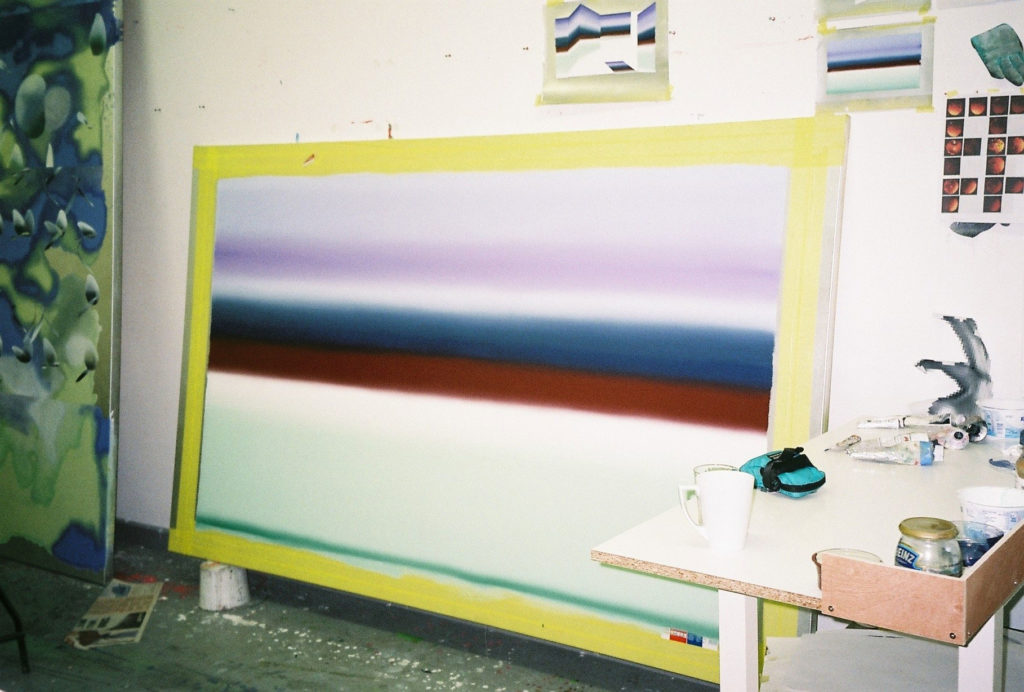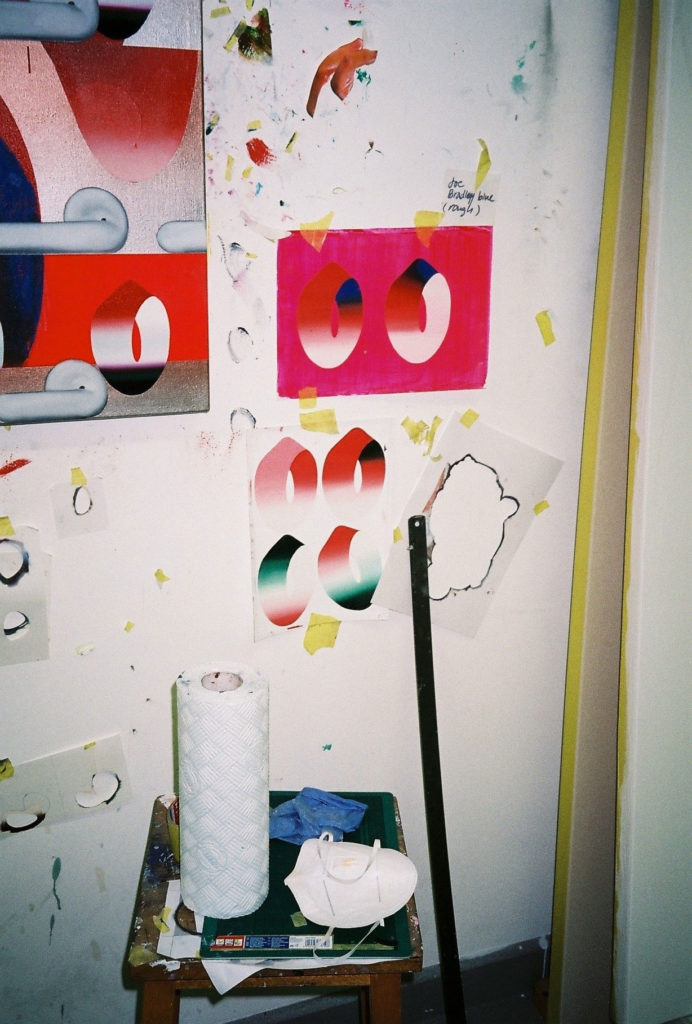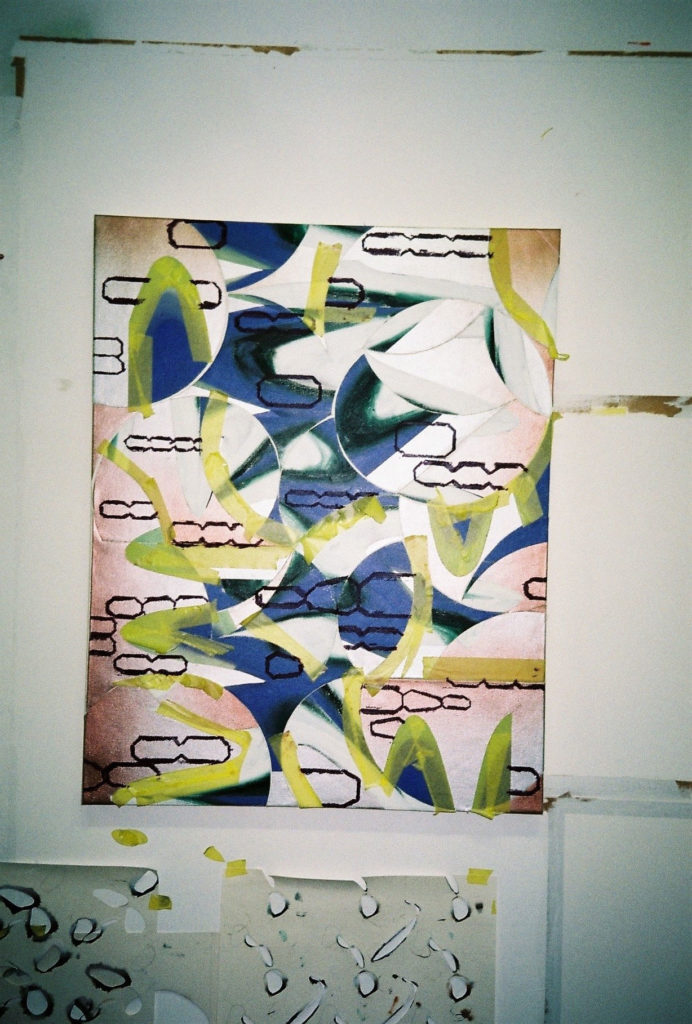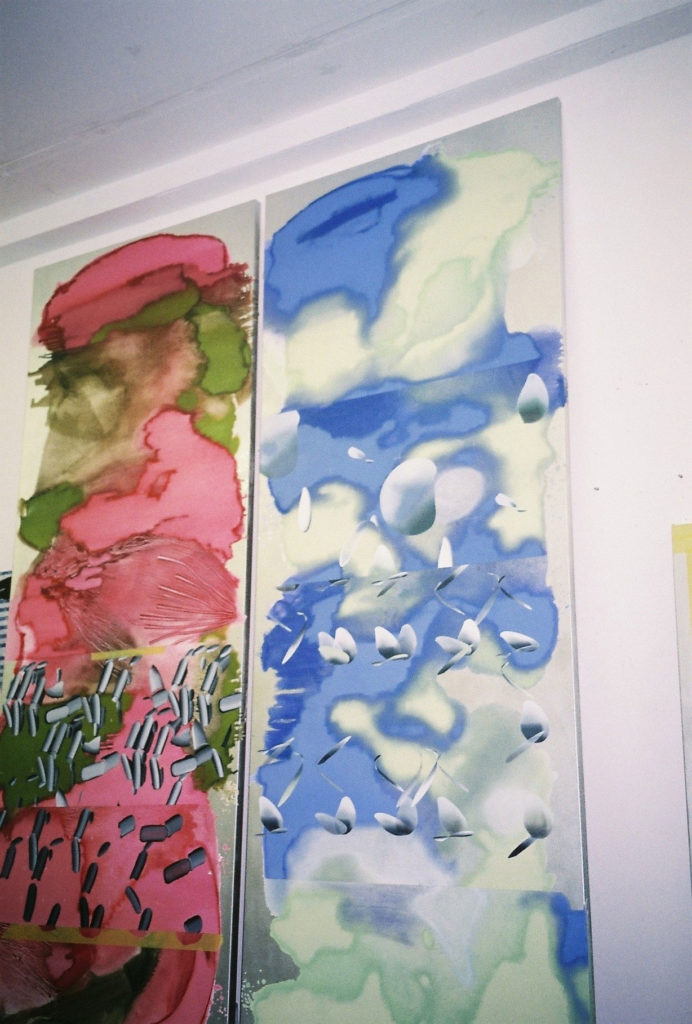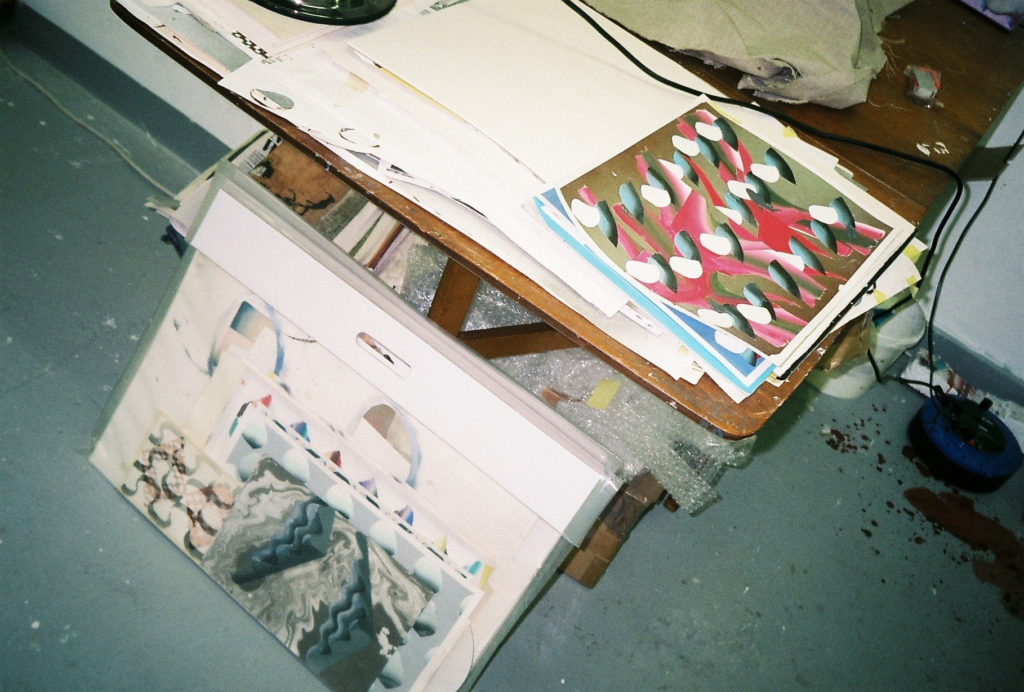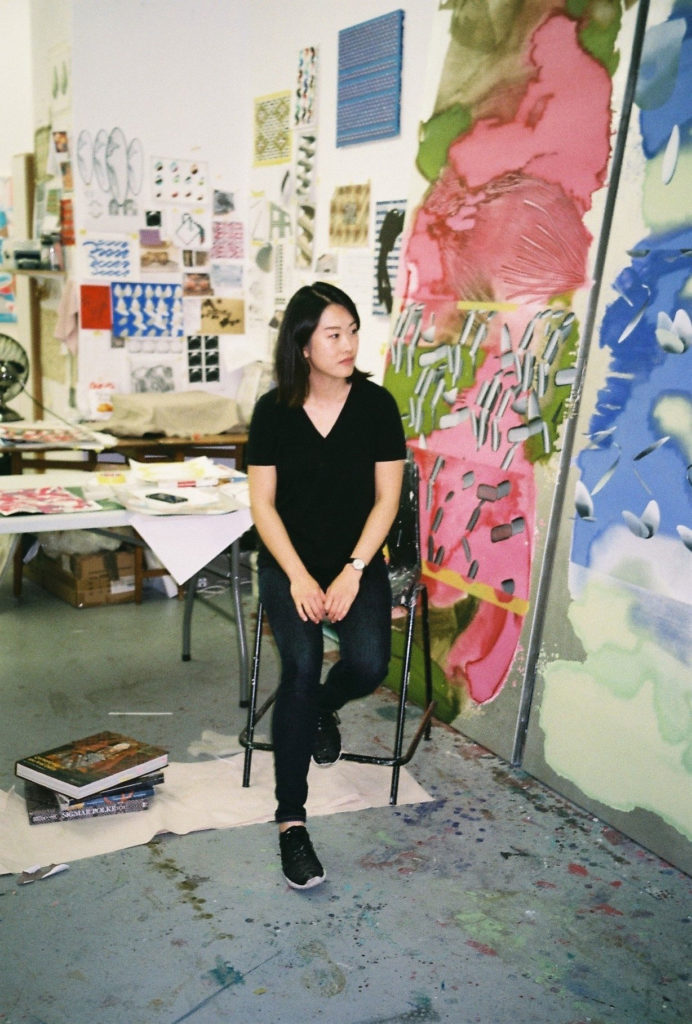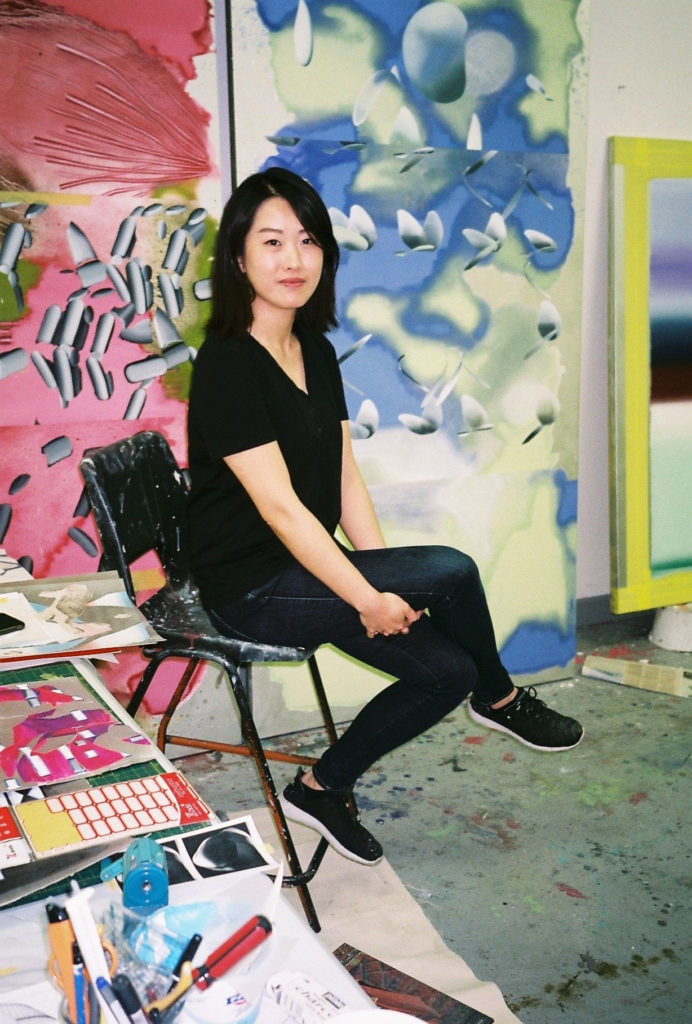



















































An orchestration of subdivisions, mind-maps and overloads.
“Understanding the studio is very important. I believe it’s in-between a private and public space – somewhere the artist should feel most comfortable in, but also refreshed at the same time.” muses artist Vivien Zhang, whose sitting in between the two areas of her East London studio, an elongated ground floor warehouse conversion that accommodates eleven workplaces and where the artist has been based for two years now (and waited to move there for three years). “I sometimes adjust my furniture arrangements to reinvigorate the space.” she continues. The interior of her studio is subdivided into two parts: one is an “alcove” at the rear end. Neatly kept, here she places her high quality sable and wolf-hair brushes to dry, as well as the works when they’re finished. The other side is the main studio section – with all the necessary items to work with, including a powerful fan, two portable wheeling palettes, a ladder, an A3 printer, nitrile gloves and hand cream. Zhang also welcomes a pause for tea in between tasks, and on the table, aside from stickers, a compressed set of charcoal and a variety of cutting tools, one can also locate a giant mug, a selection of tea cookies and a jar of strawberry marmalade. Her shelves are populated with books including “Ornament & Illusion”, “Masterpieces of Chinese Painting” or “The Triumph of Painting”. There’s a bunch of newspapers on the floor with painted elements drying on top. Secured on the wall, I notice an upside-down calendar and on the floor, a collection of gold and silver spray-paint cans forming a line towards the back door. The artist’s interest in “too many things at the same time” is directly reflected in her own space, which contains a Spider-map discreetly taped to the wall that helps her to evaluate connections between her works and consolidate ideas for shows. Highlighting the diversity of her research, it holds groupings of headings varying from shapes (‘sphere’, ‘oval’, and ‘reuleaux triangle’) to those relating to computers (‘manicures/cursors’, ‘glitch’ and ‘contra-video game’). One can even read through terms linked with art (‘Trompe-l’œil’ and ‘preservation’), architecture (’Solomonic pillars’ and ‘architectural tapestry’), geography (‘terrain’ and ‘Cahill–Keyes world map’) and even those referring to music, such as ‘fugue’. Unifying her entire thought process is the Gömböc, which considering it’s stable/unstable shape, is appropriately circled in the centre of her mind-map. Within this complex agglomeration of inquiries, there was one particular note that stood out for its boldness, and which remarked: “UNDO, UNDO, UNDO”. At the end of the day, it does take a good 30 min for Vivien to undo her mess and tidy up her brushes and palette.








